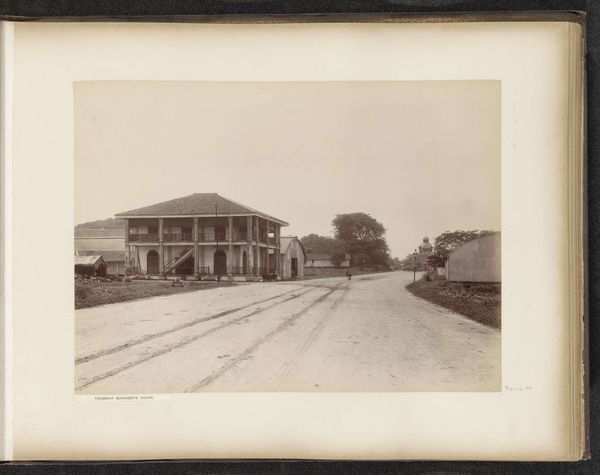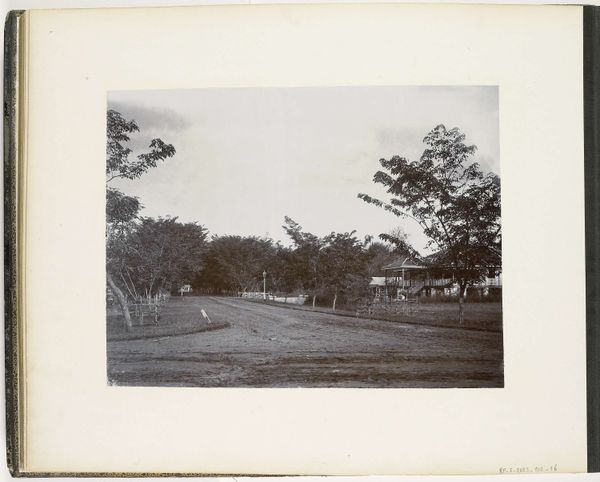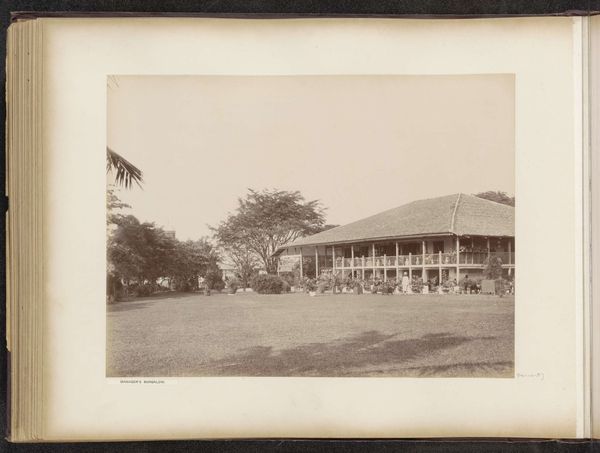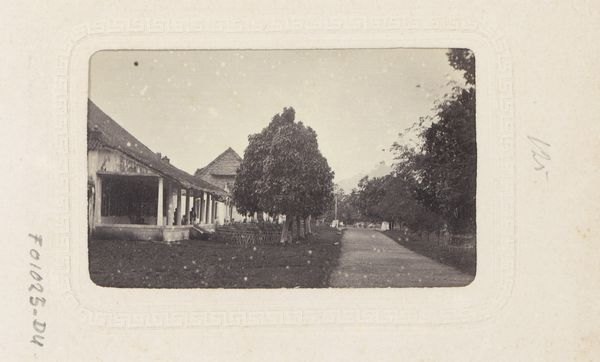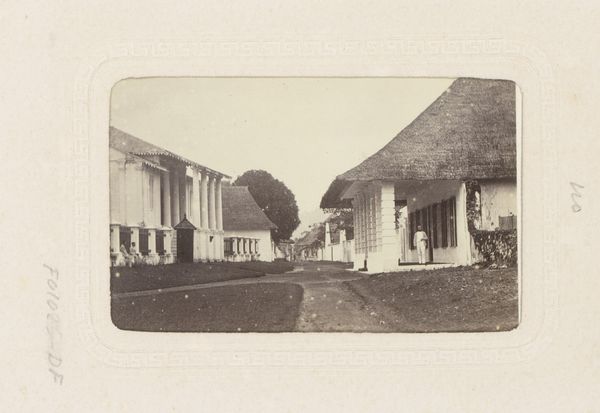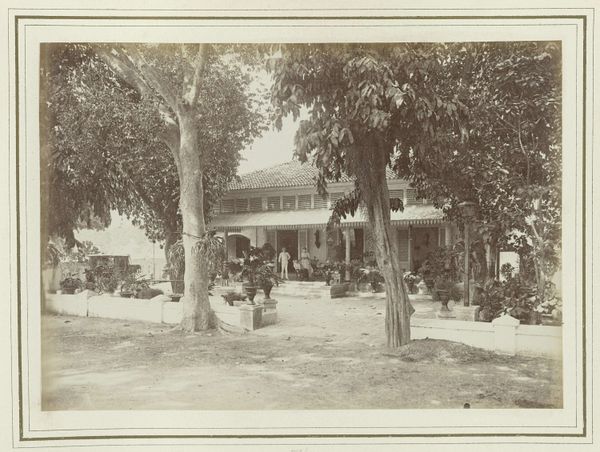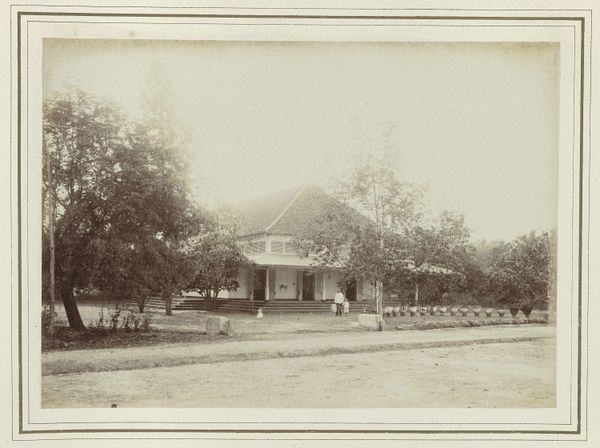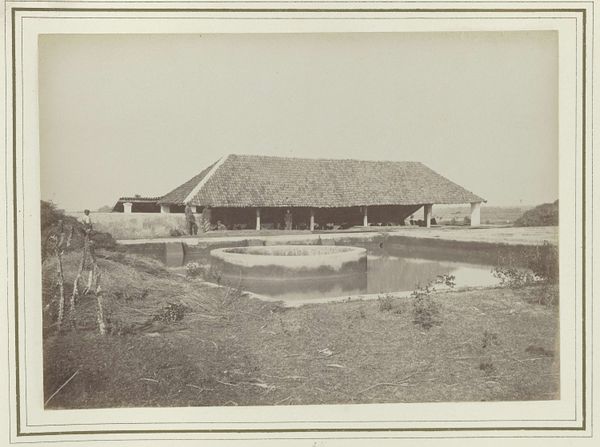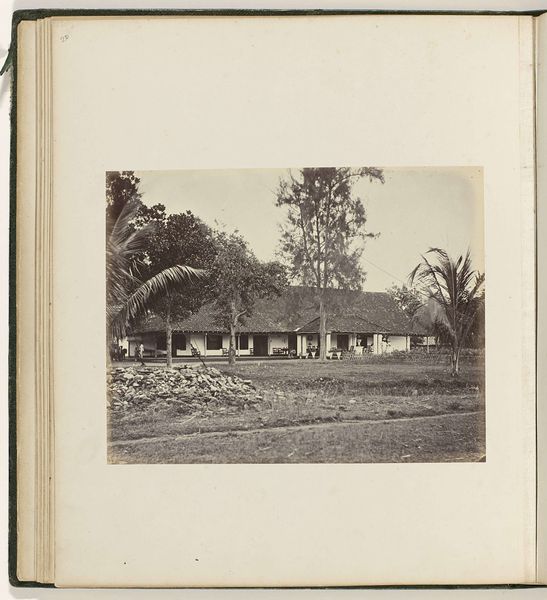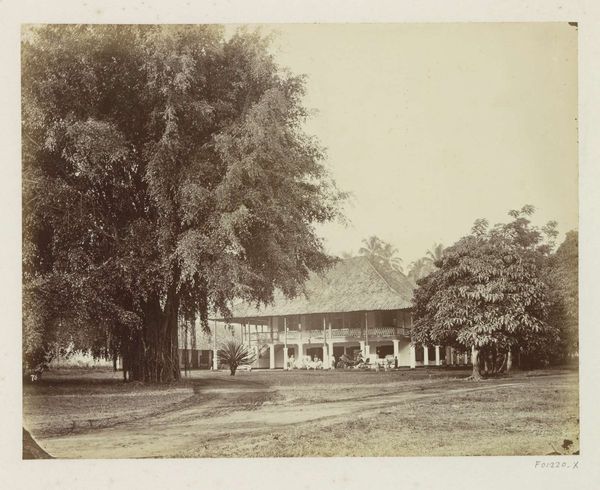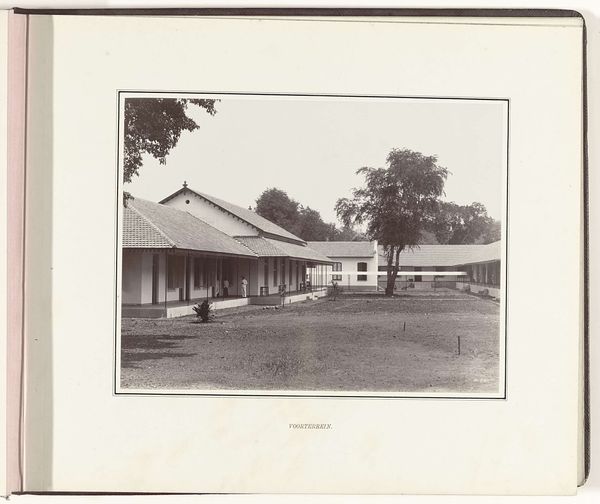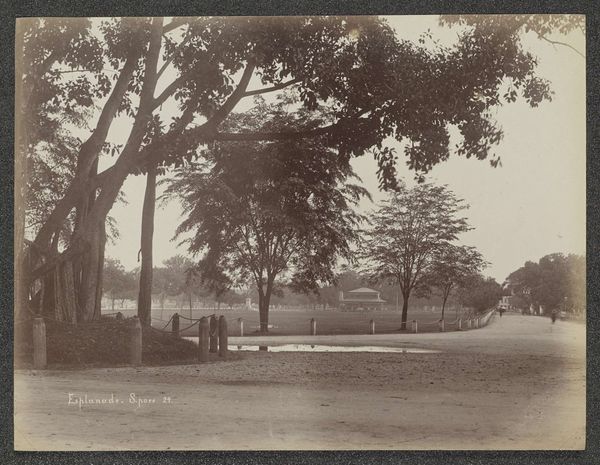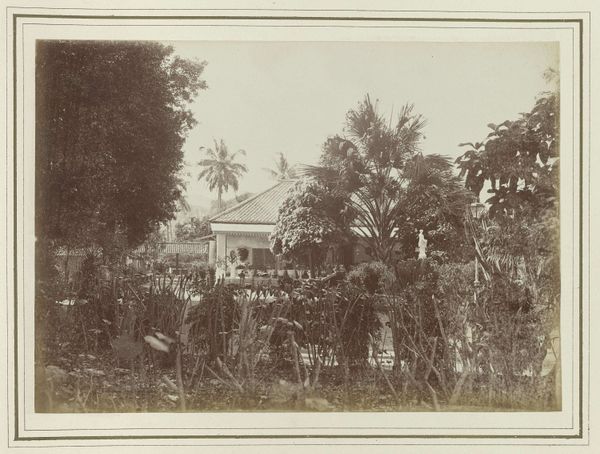
Woningen van de kolensjouwers van de Tanjong Pagar Dock Co. Ltd. in Singapore before 1905
0:00
0:00
photography, albumen-print
#
asian-art
#
landscape
#
photography
#
orientalism
#
cityscape
#
albumen-print
Dimensions: height 267 mm, width 360 mm
Copyright: Rijks Museum: Open Domain
Curator: G.R. Lambert & Co. created this albumen print, “Woningen van de kolensjouwers van de Tanjong Pagar Dock Co. Ltd. in Singapore,” sometime before 1905. It’s currently held at the Rijksmuseum. Editor: My first thought? Dust. The tonality makes the scene feel… heavy with atmosphere. You can almost taste the grit. Curator: That grit is likely part of the visual language. Beyond the basic representation, we're offered a glimpse into a very specific social and economic structure. The Tanjong Pagar docks were critical to Singapore's trade, and these dwellings suggest a very stark division of labor. The housing almost appears like a barracks, lined up uniformly. Editor: I see it, almost prison-like, especially set against that stark white. Thinking materially, albumen prints involved coating paper with egg whites—literally embedding the subject within a protein matrix. What kind of statement are we making when we use something so organic to capture and essentially, commodify these workers’ lives? It’s not unlike later industrial processes. Curator: An astute point. Perhaps it also inadvertently connects this colonial gaze with ideas of purity or even an odd sort of sustenance—absorbing the ‘essence’ of these laborers for Western consumption. The trees lining the housing almost act as symbolic barriers as well, creating another type of structure on top of what you identified, not only highlighting social strata but controlling visual access to it, a means of further solidifying those constructs. Editor: The starkness, though. Everything points back to this method, this process. There's an alchemy involved, taking something ephemeral – a lived life, a fleeting moment – and fixing it, physically embedding it into the paper's very structure. To see it now reminds you that you cannot truly capture a moment and package it away forever, it instead has changed states, and can inform new meanings in its static form. Curator: Yes, the act of capturing changes everything. By imprinting this moment onto paper, we also freeze certain aspects, preserving power dynamics but also unintentionally offering future generations a glimpse into lives and labors often rendered invisible. Thank you, looking at this from that angle gave me a greater depth for what this seemingly objective print offers, editor. Editor: Absolutely. Thanks for illuminating that unseen framework beyond mere bricks and mortar. Material context provides a portal.
Comments
No comments
Be the first to comment and join the conversation on the ultimate creative platform.
